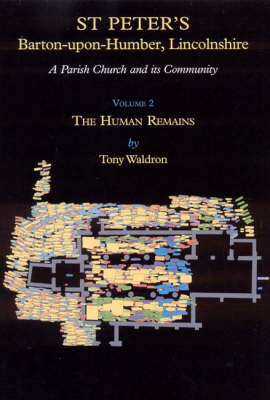The excavations at St Peter's church, Barton-upon-Humber, between 1978 and 1984 have yielded the largest collection of human remains in the UK, dating from the late tenth century to the mid-nineteenth. The twin aims of the project were to understand the architectural history and setting of this complex, multi-period building (Volume 1), and to recover a substantial sample of the population for palaeopathological study (Volume 2). An extensive programme of historical and topographical research also took place in order to set the archaeological evidence firmly in context. The parish registers, which extend back to the mid-sixteenth century, were transcribed, and these provide an important demographic overview of the population. The cemetery evidence revealed that the population is entirely secular, representing a cross-section of all levels of society living in the town and its hinterland. In total, 2,750 inhumations were examined, but there were also thousands of disarticulated bones - approximately three tons in weight - which could only be given the briefest examination. Those who were buried at St Peter's were subject not only to the normal visitations of disease and trauma but suffered an outbreak of the plague in 1593, when about a fifth of the population was lost. Taking the long view over the entire period, however, it is striking how many of the marks of health and vigour, popularly supposed to have changed substantially between the middle ages and the Victorian era, have remained relatively constant. Together, the two volumes provide fascinating insights into that mainstay of settlement - the small English market town.
- ISBN10 1842172832
- ISBN13 9781842172834
- Publish Date 29 May 2007
- Publish Status Active
- Out of Print 30 March 2021
- Publish Country GB
- Imprint Oxbow Books
- Format Hardcover
- Pages 216
- Language English
